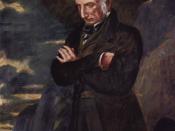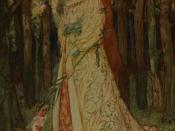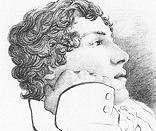Romanticism is a movement in literature that came as a result of a revolt against the previous period "Classicism". John Keats was an English poet who became one of the most important Romantic poets. William Wordsworth, another significant figure during Romanticism, described it as "liberalism in literature', meaning the artist was free from restraints and rules, and was encouraged to write about his/her own experiences, rather than being a passive narrator praising an event or person. Romanticism emphasizes on passion rather than reason, imagination rather than logic, and intuition rather than science. The Romantics were drawn to the medieval past, myths and legends, supernatural being, and nature.
Keats led a very tragic life. His poems can often be related back to his bitter and sad experiences in life. Many of the ideas in Keats's works are quintessentially of Romantic nature: imagination and creativity, the beauty of nature, magical creatures or experience, and the true sufferings of human life.
"Ode to a Nightingale" and "To Autumn" are two well known odes by Keats. They both reflect some of the concerns in its context.
"Ode to a Nightingale" explores the sufferings of mortal life and ways of escape including alcohol, imagination and poetry, and death. The nightingale represents transcendence to a better world and its song is the means by which the narrator reaches this state. Other Romantic poets often used this type of escape. In stanza I the narrator hears the song of a nightingale and he expresses his "drowsy numbness pains" which are not the effects of alcohol, but rather, from being so happy in hearing the song that his heart aches and his senses numbs. In stanza II, the narrator longs for alcohol, so he can forget his troubles and "leave the world unseen"...



Very helpful
This is a well written essay, with great ideas. The poems are explained excellently especially since the writer has taken the reader step by step through each stanza. Thanks much!
2 out of 2 people found this comment useful.